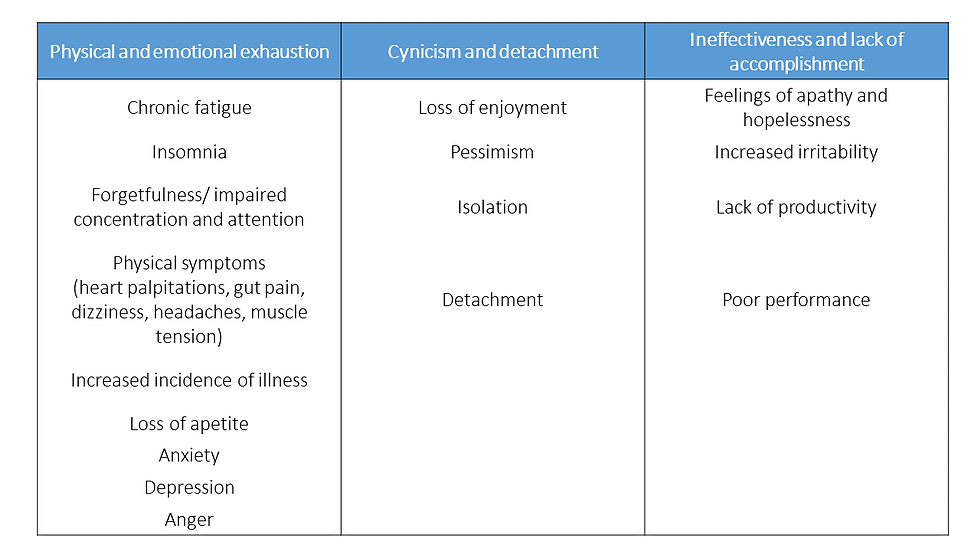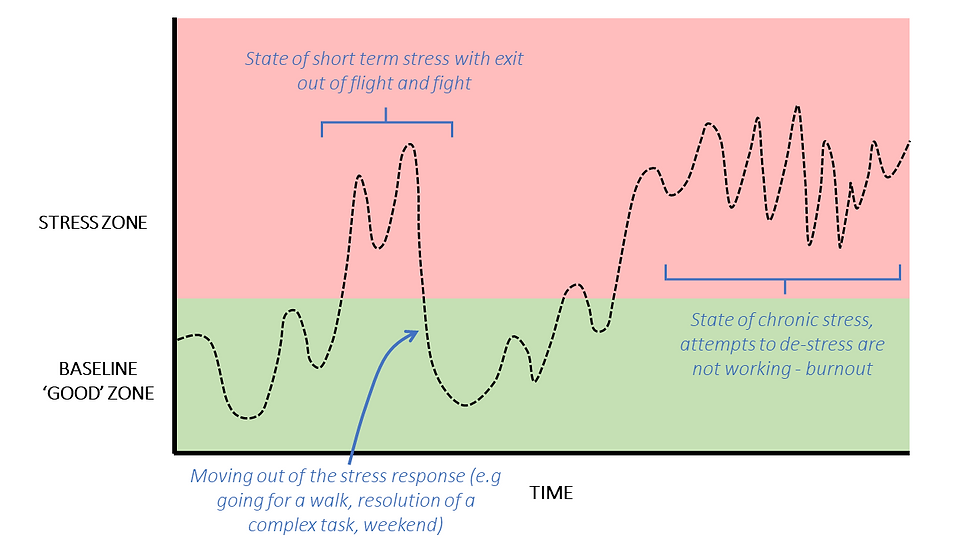What Is Burnout?
- The Little Physio
- Jun 14, 2019
- 3 min read
Updated: Jun 15, 2019
Burnout. We have had attention on burnout in the last few weeks since the reclassification of burnout by the World Health Organisation (WHO).
According to the WHO:
“Burn-out is a syndrome conceptualized as resulting from chronic workplace stress that has not been successfully managed.
It is characterized by three dimensions:
feelings of energy depletion or exhaustion;
increased mental distance from one’s job, or feelings of negativism or cynicism related to one's job; and
reduced professional efficacy.
Burn-out refers specifically to phenomena in the occupational context and should not be applied to describe experiences in other areas of life.”
It sounds like a state of emotional and physical exhaustion with that glint of cynicism and lower productivity, creativity and engagement at work. This does not sound fun at all.
How does it happen?
Burnout slowly creeps up on you. There is no clear line where one day you are not burned out and the next day you clearly are. This slow insidious onset takes us by surprise when one day you have no energy to get out of bed, those ruthless headaches won’t go away at all or that upset stomach is now excruciatingly painful.
This slow creeping up is what can make it hard to detect and prevent.
This in addition to the capitalist driven principles behind some work cultures where success is closely aligned to how much profit one can make in the workplace.
It is also hard to identify because who hasn’t felt emotionally and physically exhausted at some point because of work?
The table below summarises some key signs from Psychology Today (for more details, see the links below)

Burnout versus stress?
Burnout, in fact, starts initially as stress however the key factor is when we cannot step out of the stressful situation and return to a homeostatic state of normality, outside of the ‘flight and fight’ response.
Instead, one is constantly in the stressed response and chronically, over time, this leads to burnout. One is constantly in a state with not enough internal or external resources to successfully navigate the stressful situation.
Take a look at the depiction of fluctuations in and out of the stress. When you are in a constant state of stress, this is when you are walking towards burnout.

Factors associated with burnout
In a 2018 report, five factors were identified commonly associated with burnout.
These are:
unfair treatment at work
unmanageable workload
lack of role clarity
lack of communication and support from manager
unreasonable time pressure
From the list above, these are organisational factors. What this means is workplaces have a huge role to play in keeping their employees healthy and happy both mentally and physically. This is not saying that as an individual you should not be proactive and responsible for your own health at work.
Rather it highlights that even if you are doing all healthy things for yourself, such as mindfulness, exercising and taking lunch breaks, if there are organisational factors remaining unaddressed, you will likely still tread a path towards burnout. It takes two to tango and in the case of burnout, it take the workplace culture and policies in conjunction with individual approaches to stave off burnout.
What can you do?
If you are feeling burned out or can see the start of burnout rearing its head, a good place to start would be reflecting on what is happening at work and whether changes can be made. If this is an unmanageable workload then discussing this with your supervisor and making suggestions to address the situation can be a start. Does it mean delegating tasks? Does it mean looking to hire a part timer to take extra load off or changing the deadlines to it become more manageable?
Start the conversation, keep it open and be kind. Your employer is also a worker and is likely to be experiencing stress of a different kind when in a leadership position. Starting the conversation may open up opportunities for the whole team to talk about similar issues and perhaps as a team one can then create a strategy that promotes happy, healthy and sustainable workers.
And remember, if you have tried and tried again to shift workplace culture and policies and you are managing your stress with your own strategies but you are still getting burned out, maybe the question you need to ask yourself is, is there a better workplace?
Resources for further information
WHO summary
International Classification of Diseases
Psychology Today - signs of burnout
Gallup report





Comments